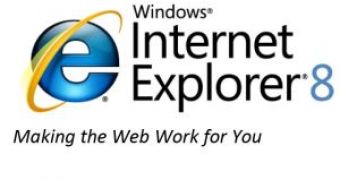In the first half of June 2008, when they gave a taste of the new features cooking for Internet Explorer 8 which are planned for integration starting with Beta 2, Jane Maliouta - IE Program Manager and James Pratt - IE Product Manager pointed out that IE8 would come with slipstream support by default. This is valid as early as the Beta 1 Build of Internet Explorer 8, but only with Windows Vista RTM, Vista SP1 and Windows Server 2008. Microsoft has left Windows XP SP3 out of the IE8 slipstream equation, this is nothing new for XP, as slipstreaming was also not supported even with Internet Explorer 7.
"With IE8 and Windows Vista, you are able to integrate IE8 into the image file of the original operating system in about 15 minutes. No more booting the OS image, manually installing IE and re-capturing the image. The slipstreaming support also extends to IE8 cumulative updates and language packages. Slipstreaming IE8 into an OS image will only be supported on Vista and Windows Server 2008 platforms. Windows XP and Windows Server 2003 do not currently offer a solution for slipstreaming Windows components, which are built using update.exe," Maliouta revealed.
Microsoft has made it clear that support for IE8's integration into the latest Windows client and server operating systems is a feature aimed at IT Professionals. In this context, users will need the right tools to get the slipstream job done, namely the Windows Automated Install Kit for managing custom Vista and Windows Server 2008 images. The operating system directory from the media has to be copied on a local computer. Maliouta has created c:slipstreamingVistaSP1x86en. In the same directory, the following folders have to be created: Mount, Pkg, Sandbox, namely "c:slipstreamingmount; c:slipstreamingpkg; and c:slipstreamingsandbox." At this point in time, IE8 has to be downloaded and placed in the same directory under a folder dubbed IE8x86en.
Maliouta added that in order "to extract the MSU, in the command prompt [users will have to] run this
Example: c:SlipstreamingIE8x86enIE8-WindowsVista-x86-enu.exe /x: c:SlipstreamingIE8x86en
Example: expand.exe c:SlipstreamingIE8x86enIE8.MSU -F:* c:Slipstreamingpkg
Example: "c:Program FilesWindows AIKToolsx86imagex.exe" /commit /unmount c:Slipstreamingmount
Example: attrib -R "C:SlipstreamingmountWindowsOffline Web Pages"
Example: "c:Program FilesWindows AIKToolsx86Servicingpkgmgr.exe" /n:"c:SlipstreamingpkgWindows6.0-KB944036 -x86.xml" /o:""c:Slipstreamingmount";"c:Slipstreamingmountwindows"" /s: "c:Slipstreamingsandbox" /l:"c:Slipstreamingslp.log"
Example: attrib +R "C:SlipstreamingmountWindowsOffline Web Pages"

 14 DAY TRIAL //
14 DAY TRIAL //